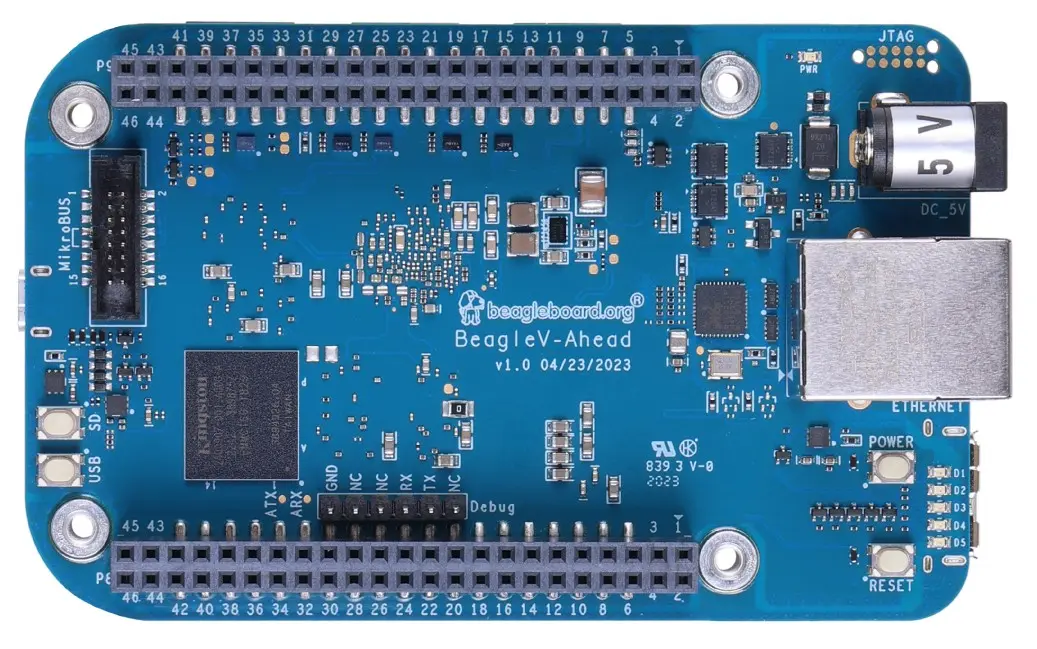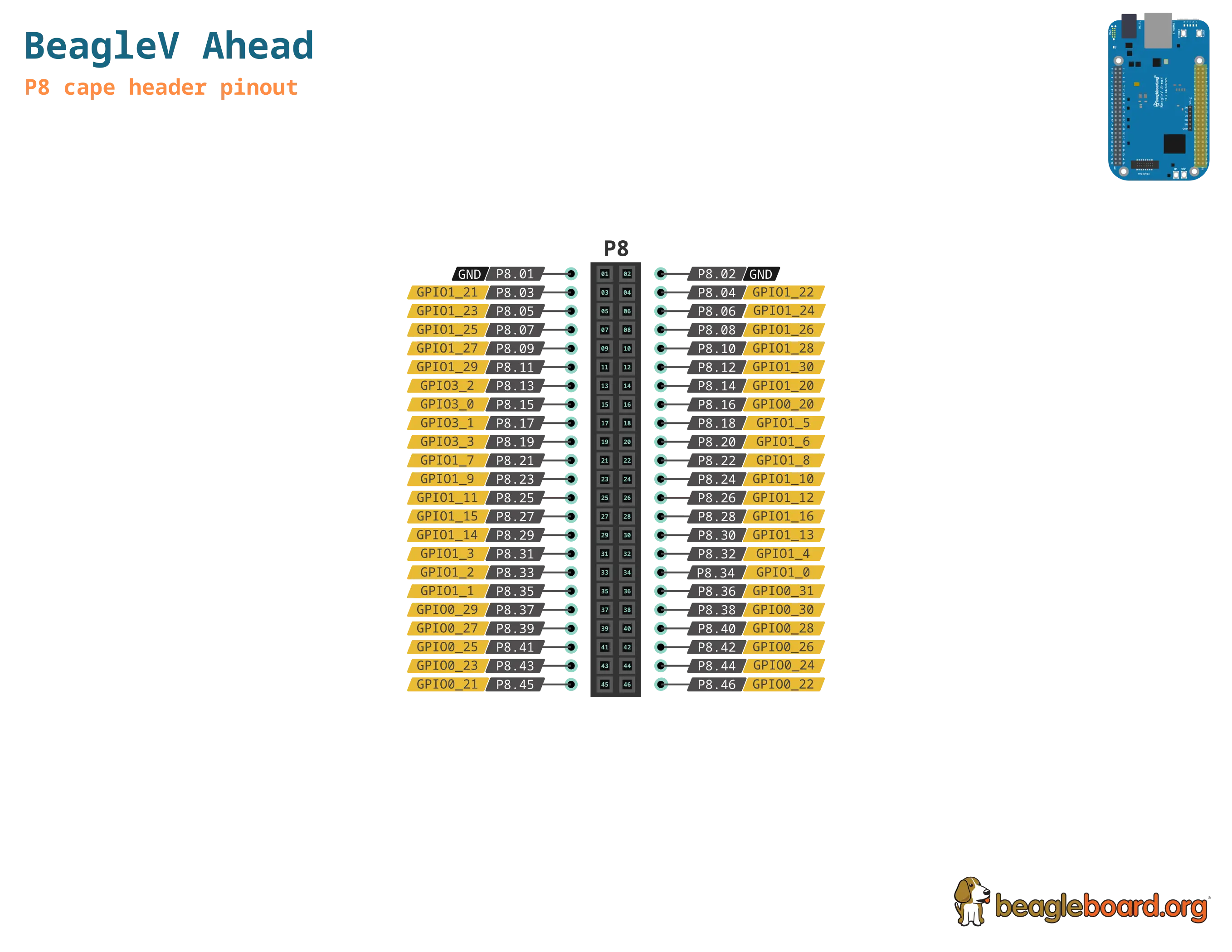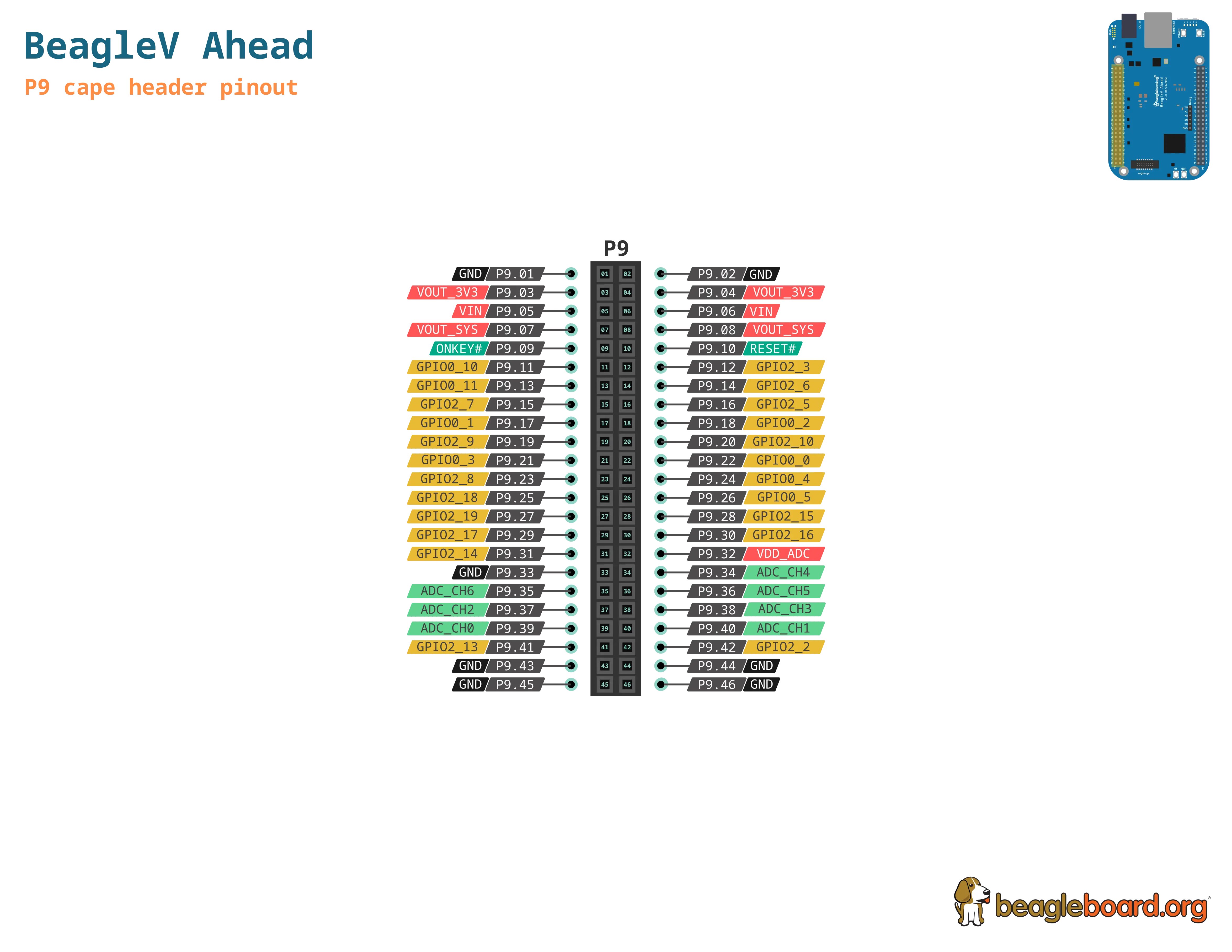Introduction#
BeagleV-Ahead is a high-performance open-source RISC-V single board computer (SBC) built around the Alibaba TH1520 SoC. It has the same P8 & P9 cape header pins as BeagleBone Black allowing you to stack your favourite BeagleBone cape on top to expand its capability. Featuring a powerful quad-core RISC-V processor BeagleV-Ahead is designed as an affordable RISC-V enabled pocket-size computer for anybody who wants to dive deep into the new RISC-V ISA.
Warning
Security Notice: GhostWrite Vulnerability
The BeagleV-Ahead platform, like many RISC-V systems based on the XuanTie C910 and C920 processors, are affected by the “GhostWrite” vulnerability (CVE-2023-4966), which allows for potential privilege escalation or unauthorized memory access. As this vulnerabiity is due to the faulty instructions in the vector extension of this core, there is no patch fix available for this. Only one way to mitigate this is to disable the vector extension but this will drastically reduce the performance of the board.
For a hands-on demonstration, see GhostWrite Exploit (CVE-2023-4966) in the demos and tutorials section.
For more details on this vulnerability please refer to the following links:
Pinout Diagrams#
Choose the cape header to see respective pinout diagram.
Detailed overview#
BeagleV-Ahead is built around T-Head TH1520 RISC-V SoC with quad-core Xuantie C910 processor clocked at 1.85GHz with a 4 TOPS NPU, support for 64-bit DDR, and audio processing using a single core C906.
Todo
remove “<To-Do>” items in the table below.
Feature |
Description |
|---|---|
Processor |
T-Head TH1520 (quad-core Xuantie C910 processor) |
PMIC |
DA9063 |
Memory |
4GB LPDDR4 |
Storage |
16GB eMMC |
WiFi/Bluetooth |
|
Ethernet |
|
microUSB 3.0 |
|
HDMI |
|
Other connectors |
|
Board components location#
This section describes the key components on the board, their location and function.
Front components location#
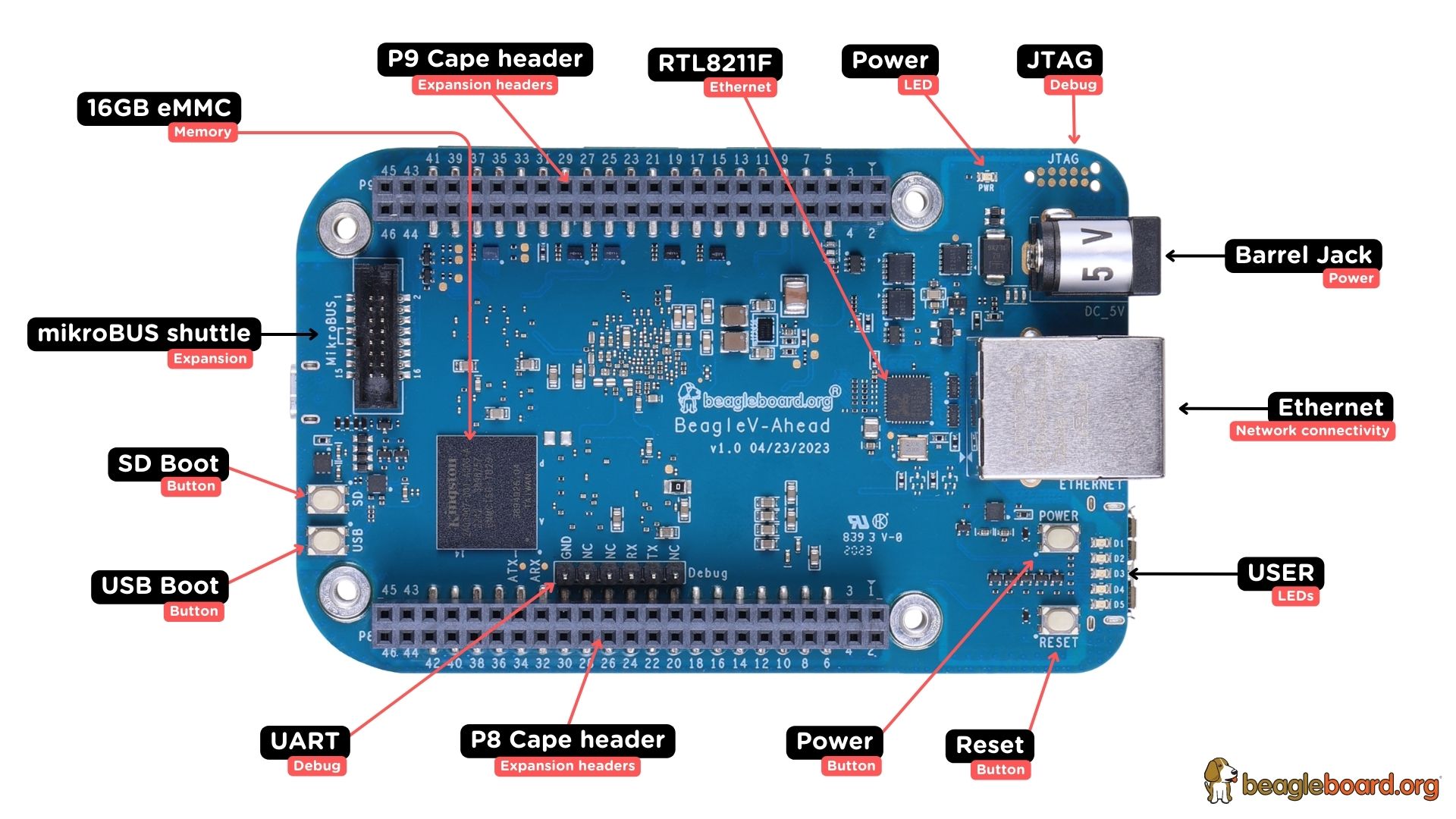
Fig. 502 BeagleV-Ahead board front components location#
Feature |
Description |
|---|---|
Power LED |
Power (Board ON) indicator |
JTAG (TH1520) |
TH1520 SoC JTAG debug port |
Barrel jack |
Power input |
GigaBit Ethernet |
1Gb/s Wired internet connectivity |
User LEDs |
Five user LEDs, Power and boot section provides more details. These LEDs are connect to the TH1520 SoC |
Reset button |
Press to reset BeagleV-Ahead board (TH1520 SoC) |
Power button |
Press to shut-down (OFF), hold down to boot (ON) |
P8 & P9 cape header |
Expansion headers for BeagleBone capes. |
UART debug header |
6 pin UART debug header |
USB boot button |
Hold and reset board (power cycle) to flash eMMC via USB port |
SD boot button |
Hold and reset board (power cycle) to boot from SD Card |
mikroBUS shuttle |
16pin mikroBUS shuttle connector for interfacing mikroE click boards |
16GB eMMC |
Flash storage |
RTL8211F |
Gigabit IEEE 802.11 Ethernet PHY |
Back components location#
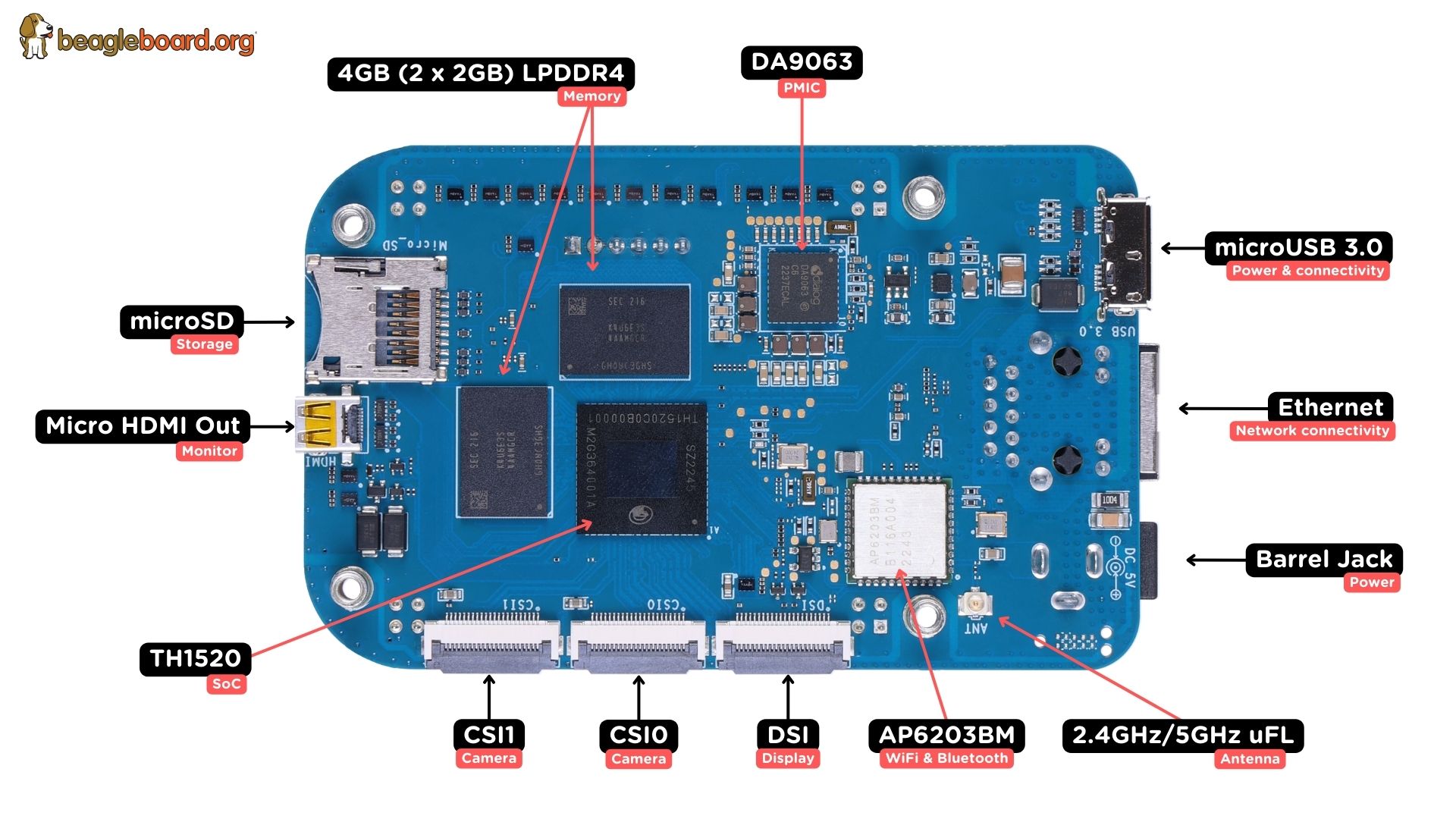
Fig. 503 BeagleV-Ahead board back components location#
Feature |
Description |
|---|---|
DA9063 |
Dialog semi Power Management Integrated Circuit (PMIC) |
microUSB 3.0 |
Power & USB connectivity as client or Host (OTG) |
Antenna connector |
2.4GHz/5GHz uFL connector |
AP6203BM |
Ampak WiFi & BlueTooth combo |
DSI |
MIPI Display connector |
CSI0 & CSI1 |
MIPI Camera connectors |
TH1520 |
T-Head quad-core C910 RISC-V SoC |
Mini HDMI |
HDMI connector |
microSD |
Micro SD card holder |
4GB RAM |
2 x 2GB LPDDR4 RAM |
